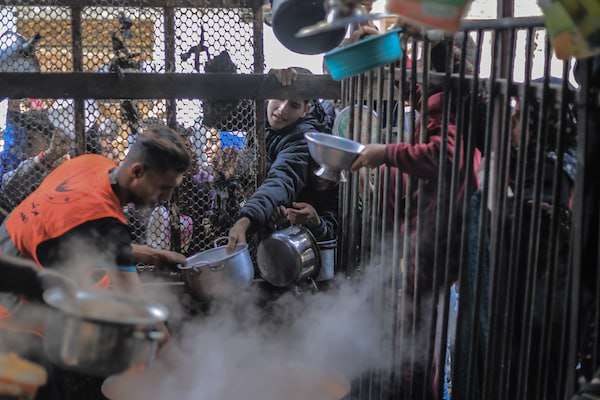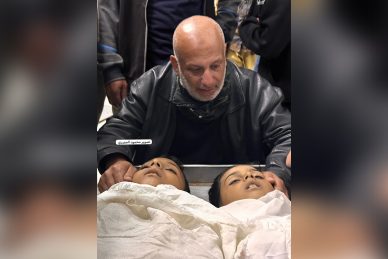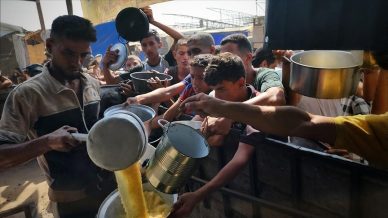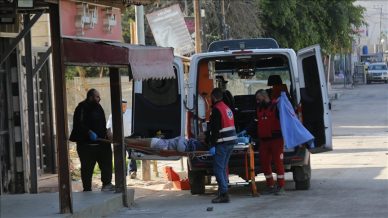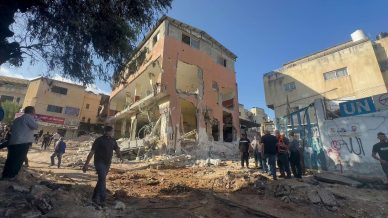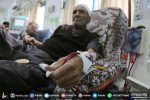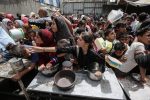GAZA, (PIC)
After days of hunger, the Palestinian little girl Haneen Saleh Juma died, becoming a martyr added to the list of martyrs of the famine caused by the continuous Israeli aggression on the Gaza Strip.
Haneen’s father couldn’t imagine a day when he couldn’t provide a morsel of bread to keep his beloved daughter alive.
Death by starvation
Haneen Saleh Hassan Juma (8 years old) died due to starvation, suffering from severe calcium deficiency, according to the Euro-Med for Human Rights.
Her father remembers that tragic night when she asked for food, and he promised to bring it in the morning. By dawn the next day, Haneen began to cry, and as he approached her, he realized she was nearing death. They transported her on a donkey-drawn cart to the hospital due to the unavailability of cars. The doctor informed him that his daughter died due to dehydration and food shortage.
Hunger has become one of the causes of death in the Gaza Strip, especially in Gaza City and its northern areas, after the Israeli forces used hunger as a weapon in their war, amidst the silence and inability of the international community to even send humanitarian aid to hundreds of thousands of hungry people.
700,000 Palestinians live in Gaza City and North Gaza, refusing to evacuate to South Gaza Valley, insisting on resilience to fail Israeli displacement plans since the start of the brutal war on the Strip.
Difficulty in estimating numbers
Israel resorted to the weapon of starvation against the residents of the Gaza Strip, especially its north, initiating its devastating war on October 7th by announcing the cessation of electricity, water, and food supplies, and imposing a comprehensive blockade after its war minister described Gaza residents as human animals.
Haneen is not the first to be martyred due to hunger in the Gaza Strip, as the Euro-Med previously documented the deaths of many citizens, including children and the elderly.
Human rights sources confirm that the number of deaths due to hunger is greater than announced, due to the lack of a clear official mechanism to count them, and often their deaths are recorded under other causes, hiding the true number of hunger victims.
The situation in Gaza, especially in the isolated north, is deteriorating, with aid convoys facing permit refusals and long delays.
In the struggle for survival, residents resort to drastic measures like grinding animal feed and consuming it to stay alive.
Access to basic resources such as water, healthcare, and sanitation systems is greatly limited, leading to the spread of diseases.
Animal feed
Mahmoud Yasser from Jabalia, in northern Gaza, shows signs of exhaustion as he explains to the PIC how he spends long hours searching for flour to feed his 5 children, but he couldn’t find it, so he had to buy animal feed to make bread. He adds that he couldn’t find white flour, so he bought 3 kilograms of animal feed.
He adds that many residents of the northern Gaza Strip have been eating rice for a long time, and now the price of rice has tripled, and they can no longer afford it, wheat flour is missing, and corn and barley flour are significantly more expensive and taste bad. Buying 3 kilograms of flour costs Palestinians 100 shekels (about 30 dollars) daily, which citizens find difficult to afford.
Citizen Ahmed Qurieq tries to explain what his fellow men in Gaza are suffering. He says, “Palestinian men are experiencing a tragedy on all levels; there’s no food, no proper sleep due to ongoing Israeli bombardment, and no drinkable water.”
He pointed out that citizens in the northern area of the Strip only have one meal every two days, which is insufficient and lacks nutritional value, calling for an Arab revolution to break the siege on Gaza and to stop the Israeli cursed actions.
While trucks sporadically enter the southern areas of Gaza, none have reached Gaza City and the north.
A massive catastrophe
To confront the famine situation in the Strip, Gaza’s Government Media Office underlined that the two provinces need 1,300 food trucks daily to alleviate hunger, with 600 for the north and 700 for Gaza.
Michael Ryan, the Emergency Operations Director at the World Health Organization, emphasized that Gaza residents are “dying of hunger” due to restrictions on humanitarian aid.
Ryan stated, “People are dying of hunger and being pushed to the brink, and they’re not parties to this conflict (…) They must be protected as well as their health facilities.”
He added, “The people of Gaza are in the midst of a massive catastrophe,” indicating that the situation may worsen.
Ryan confirmed that access to proper nutrition has become a major issue in Gaza, especially with the sharp decline in calorie intake and the quality of food consumed.
He reminded that people shouldn’t indefinitely rely on food aid, explaining, “This aid should be emergency food assistance to support the population.”
He continued, “The combination of malnutrition with overcrowding and exposure to cold due to lack of shelter (…) could create favorable conditions for widespread epidemics,” especially among children, “and we’re starting to see it.”
Negotiation suspension
Faced with this situation, Hamas found no option but to announce the suspension of ceasefire negotiations and the swap deal until aid and relief are brought into the northern Gaza Strip.
Sources close to Hamas said, “Negotiations cannot proceed while hunger gnaws at the Palestinian people.”
A UN agency previously confirmed that Israel has not allowed any aid into Gaza and its north for weeks, exacerbating the humanitarian crisis with the absence of any food supplies.

